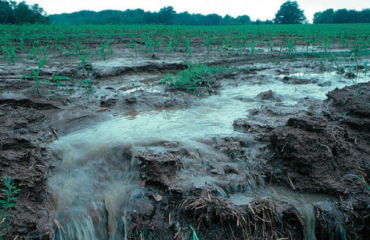–Madhubanti Sadhya, Teaching Associate, CEERA, NLSIU
-Vidushi Gupta, Intern, CEERA, NLSIU
“Assessment of Climate Change over the Indian Region -A Report of the Ministry of Earth Sciences (MoES),Government of India” is the first-ever climate change assessment report for India, published in June 2020. It is a novel attempt to document climate changes in different parts of India. It consists of 12chapters describing the observed changes with respect to precipitation, temperature, monsoon, drought, sea level, tropical cyclones, extreme weather events etc. It aims to provide policymakers with a comprehensive view on the possible future climate change projections. It is a significant development, since it can help to improve the level of public awareness on issues of climate change in India. The Report can also lead to a more informed discourse in this area, since it not only highlights the current situation, but also provides future estimates and discusses the potential impact of the change, which are useful for designing the mitigation strategies that are necessary to tackle climate change.
The Report starts by analysing climate change in the global context. It observes that the global average temperature has risen by around 1°C since pre-industrial times. This is due to the changes induced by human activities, such as emissions of greenhouse gases(GHGs), aerosols and changes in land use and land cover (LULC) during the industrial period, which have altered the atmospheric composition and the planetary energy balance. This warming has contributed to a significant increase in climate extremes, changes in precipitation and wind patterns, acidification of the global oceans, melting of glaciers, rising sea levels, and changes in ecosystems. The Report further states that if the current GHG emission rates continue, the global average temperature will rise by about 5°C or more, by the end of the twenty-first century. Moreover, even if the “Nationally Determined Contributions” under the 2015 Paris Agreement are met, global warming is expected to exceed by 3°C by the end of the century. However, the extent and rate of climate change as well as its impacts will vary across the planet.
In the specific context of India, the Report states that India’s average temperature has risen by around 0.7°C during 1901–2018, and is further expected to rise by approximately 4.4°C by the end of the century. Between 1986–2015, temperatures of the warmest day and the coldest night of the year have risen by about 0.63°C and 0.4°C respectively, and are projected to rise further by about 4.7°C and5.5°C, respectively. Moreover, the frequencies of the occurrence of warm days and warm nights, summer heat waves and the average duration of heat waves are also expected to increase, due to the combined rise in surface temperature and humidity.
Moreover, the Report notes that the sea surface temperature (SST) of the Indian Ocean has risen by 1°C on an average during1951–2015, markedly higher than the global average SST warming of 0.7°C. Ocean heat content has also increased during 1955–2015, with an abrupt rise in the last two decades. Both the SST and ocean heat content in the Indian Ocean are unfortunately expected to rise further, as per estimates.
The Report also discusses the changes in rainfall, and notes that the summer monsoon precipitation (June to September) over India has declined by around 6%during1951-2015, due to the radiative effects of anthropogenic aerosol over the Northern Hemisphere that have offset the expected precipitation increase from GHG warming. Dry spells have been more frequent (27% higher during 1981–2011 than during 1951–1980) and wet spells have been more intense during the summer monsoon season. The frequency of localised heavy precipitation occurrences and daily precipitation extremes has increased due to a rise in atmospheric moisture content. These are expected to increase further, due to continued global warming and anticipated reductions in anthropogenic aerosol emissions in the future.
Further, the Report states that the overall decrease of seasonal summer monsoon rainfall has led to an increase in the frequency and spatial extent of droughts over India. Specific areas in Central, Southern and North-eastern India have experienced more than 2droughts per decade, and the area affected by droughts has also increased by 1.3% per decade during 1951-2016. The frequency, intensity and area under drought conditions in India is expected to increase further by the end of the century, due to the increased variability of monsoon precipitation and water vapour demand in a warmer atmosphere.
The Report also notes the global rise in sea levels, due to the continental ice melt and thermal expansion of ocean water. Sea-level rise in the North Indian Ocean (NIO) occurred at a rate of 1.06–1.75 mm per year during 1874–2004 and has accelerated to3.3 mm per year during 1993–2017.At the end of the century, steric sea level in the NIO is projected to rise by approximately 300 mm, with the corresponding projection for the global rise being approximately 180 mm. The Report also finds that the annual frequency of tropical cyclones over the NIO basin since 1951 has significantly reduced. In contrast, the frequency of very severe cyclonic storms during the post-monsoon season has increased significantly (+1 event per decade) during 2000–2018. However, a clear signal of anthropogenic warming on these trends has not yet emerged. Climate models project a rise in the intensity of tropical cyclones in the NIO basin.
Another factor discussed in the Report is the changes taking place in the Himalayas. The Hindu Kush Himalayas (HKH) experienced a temperature rise of about 1.3°C during1951–2014. Several areas of HKH have experienced a decline in snowfall and the retreat of glaciers. However, the Karakoram Himalayas have experienced higher winter snowfall that has prevented glacier shrinkage. By the end of the century, the annual mean surface temperature over HKH is projected to increase by about 5.2°C. The projections indicate an increase in annual precipitation, but a decrease in snowfall over the HKH region.
The Report concludes that human-induced climate change is expected to continue apace during the twenty-first century. Such changes are likely to place increasing stress on India’s natural ecosystems, agricultural output, and fresh water resources. These portend serious consequences for the country’s biodiversity, food, water and energy security, and public health. It also poses potential coastal risks due to sea-level rise, including the loss of land due to increased erosion, damage to coastal projects and infrastructure, salinization of freshwater supplies and a heightened vulnerability to flooding and cyclonic storms. In the absence of mitigation and adaptation measures, the impact of climate change is likely to disrupt the country’s rapid economic growth, and the path of achieving the sustainable development goals.
Therefore, the Report indicates that India’s climate change adaptation and mitigation response is achievable by a greater emphasis on widening observational networks, sustained monitoring, expanding research on changes in climate and their impact, development of integrated, multiscale models that are capable of aiding predictions, scenario synthesis and providing information required for vulnerability assessment, and by continued investment in education and outreach programs. It proposes various measures like developing useful to usable (U2U) research and application agenda that can translate research to effective decision tools for adapting to climatic change. It also lays emphasis on equity and social justice, as being critical to building climate resilience, since the most vulnerable people such as the poor, the disabled, outdoor labourers and farmers will bear the brunt of climate change impacts. Other suggestions to tackle climate change include transition to renewables to reduce GHG emissions and water consumption for cooling thermal power plants, low impact development and green building infrastructure that can reduce both urban heating and air pollution, rainwater harvesting, restoration of groundwater levels, afforestation etc. Moreover, in order to improve the accuracy of future climate projections, it is essential to develop strategic approaches for improving the knowledge of Earth system processes. Thus, the Report reinforces the idea that changes in climate need to be considered not just as an isolated phenomenon, but as a part of a complex system, that has far-reaching ramifications on various aspects of human existence.





pcateringbekasi.blogspot.com
[KINDKARMA] 介護 パジャマ フルオープン 綿100% ミニ裏毛 S 上下セット 杢グレー 紳士 女性 ケアマネ監修 cpl-s-gy その他 – nlaw.nls.ac.in
[…] rybelsus 14mg […]
[…] clomid 50mg for male […]
[…] cialis in mexico […]
[…] 100 mg sildenafil […]
[…] how to use ginseng root for men’s health […]
[…] viagra 25 […]
[…] blue viagra pill 100 […]
[…] street value of viagra 50mg […]
[…] 100mg sildenafil tablets […]
[…] viagra 50 mg price walmart […]
[…] buy 5mg cialis online […]
[…] cialis without a doctor prescription canada […]
[…] viagra 50 mg street price […]